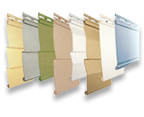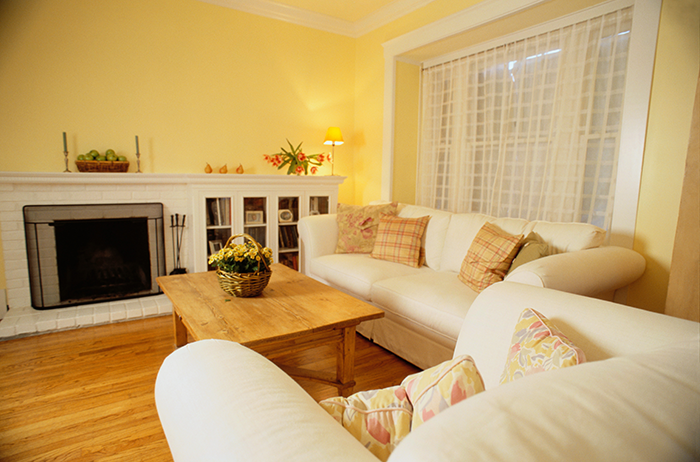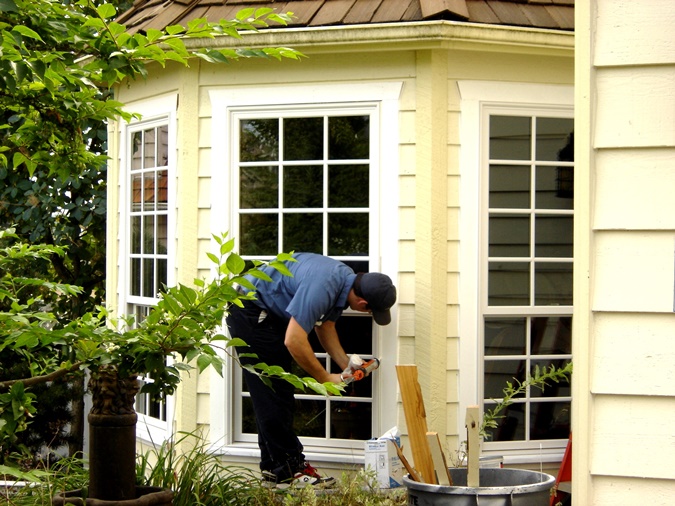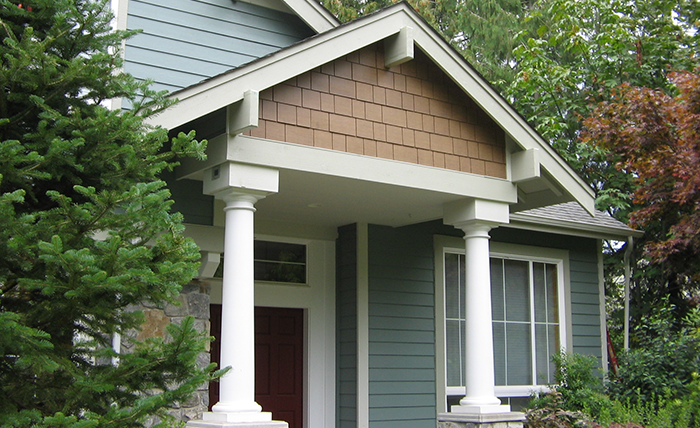
10 signs you need new siding
- Frequent need of paint
How long has it been since you last painted your home? If it’s been less than five years, and you are seeing damage, there’s a good chance your siding needs to be replaced. A home with good siding can keep its paint for ten years or more, but damaged siding can cause the paint to chip, peel, and crack prematurely.
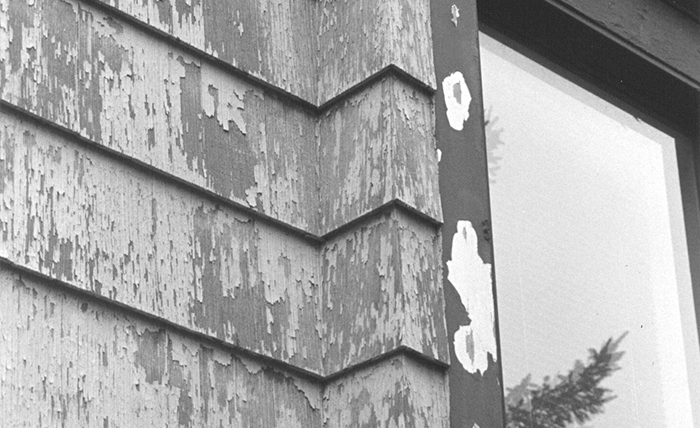
- Warping
If you walk around your house and notice that your siding is warped in certain places, your siding isn’t doing its job properly. Warped siding can indicate a small problem on the surface of your siding, or a widespread problem affecting the structure of your home.
Inspecting your siding for damage is a fairly simple task. For wood siding, bring along a sharp object such as a screwdriver. In areas where the warping is most prominent, poke your screwdriver under the siding cover and prod the boards to see how solid they are. If the siding is soft, it’s most likely a sign of decay.
- High utility bills
Even if you have made energy efficient improvements and feel comfortable in your home, it’s best to look at your utility bills from the last few years. If there is a significant or unexplainable increase in your heating and cooling costs over that time period, one factor could be the siding. Damaged siding and poor quality insulation can allow air to leak in from the outside, causing your heat or air conditioning to run more than usual. Replacing your siding can not only improve the structure of your home, but also get your utility bills back to a more reasonable rate.
- Mold
Any signs of mold, fungus, or mildew on your home’s exterior are sure signs of damaged siding. Mold indicates water infiltration, which will cause problems for both the exterior and interior of your home, including illness and structural damage.
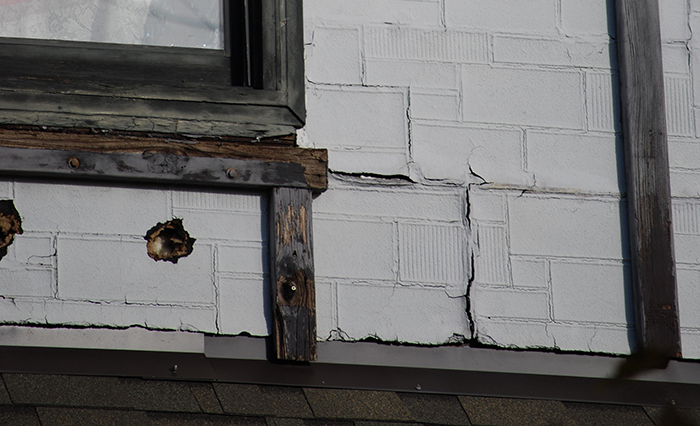
- Dry rot
Dry rot is a very serious problem that isn’t always easy to detect. Dry rot is a slow process that eats your siding’s body while leaving the top layer intact. The boards and structure of your siding may be crumbling away without you knowing it.
It’s always a good idea to check your siding for dry rot at least once a year by performing a simple test. Using the handle of a screwdriver or hammer, tap the siding’s surface to test for weakness and damage. Any part of your siding suffering from dry rot will need to be replaced immediately before it spreads.
- Starkly faded color
Today’s high performance siding holds color better than ever. On older vinyl siding, faded color is generally a sign of old age. If you notice fading color on your home’s siding, it’s a good indicator that it’s time to take a closer look for any siding damage that could lead to more serious problems.
If you have a type of siding called LP Inner Seal (by Louisiana Pacific), you may already be aware that this particular wood siding product is known to discolor and disintegrate prematurely.
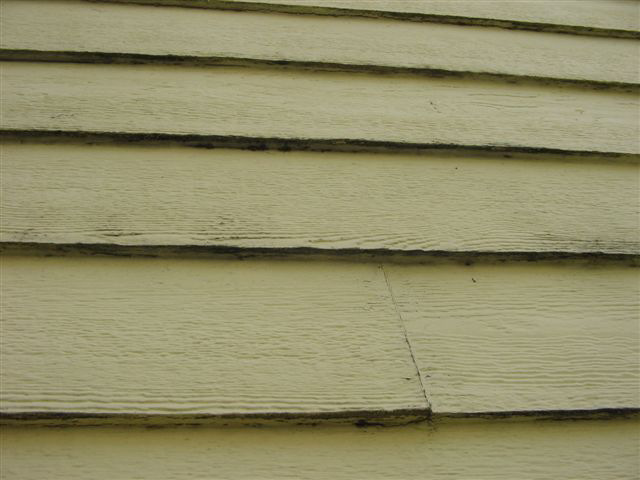
- Bubbled siding
Bubbles just under the surface of your siding are almost always an indication that water is or was trapped underneath. Siding’s main purpose is to keep water away from the walls to prevent internal rotting and mold problems. If there’s bubbling, this may also be evidence of mold or rotting, both of which should be addressed immediately.
- Interior wall problems
Another good indicator that your siding isn’t doing its job properly is the state of your interior walls. If there is a place on your walls where wallpaper or paint is constantly peeling off, there’s a good chance it’s due to water infiltration through damaged siding. This can be common around windows if the siding-window barrier isn’t caulked properly and often. If not addressed, this can start the wood to rot under your siding.
- Nature damage
Nature can do quite a number on your home’s siding, and if you live in an area prone to frequent rain, high winds, hail, snow, or other storms, the chance of your siding wearing out quickly increases. Anytime your area experiences harsh weather conditions, inspect your siding for damage.
The same goes for areas full of wildlife. Woodpeckers, squirrels, rodents, and insects can all cause serious damage to your home’s siding. Frequent inspections will help you find any problem before it spreads, which will save you big on costly repairs.
- Loose or cracked Siding
Poor installation, high winds, and other natural elements can cause your siding to crack or loosen over time. Loose and cracked siding cannot properly protect a home’s structure from damage, and should be addressed promptly.
Best siding options
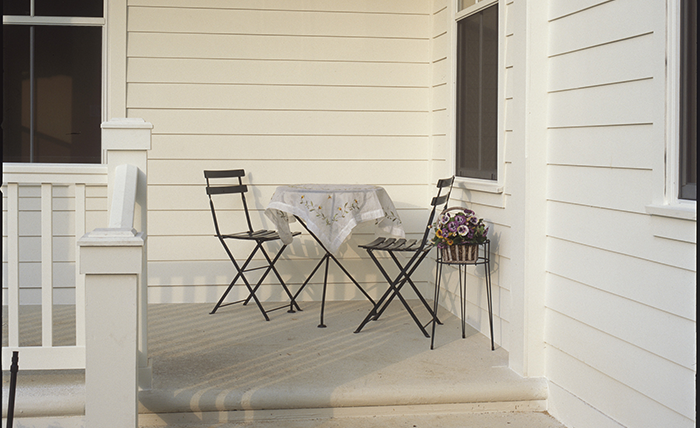
For optimized energy efficiency, increased home value, and improved appearance, we recommend these popular siding options:
Insulated composite siding: Composite or vinyl siding is very durable and comes in attractive styles that give your home the look of cedar without the maintenance. The best of these are insulated to provide additional energy savings and efficiency for the entire home. It reduces noise and saves you energy because of its insulated high R-value of 4.0, which is four times as efficient as traditional wood siding that has an R-value of 1.0. Today’s composite siding resists fading and has extensive warranties.
Fiber cement siding: This siding is one of the most popular types of siding to date, and James Hardie is the leader in fiber cement with over 5 million homes under its protective wing. It comes in any color you like and a variety of styles to meet any taste. Fiber cement siding is an excellent option simply because it won’t rot, crack, or warp, plus it is fire resistant.
If you’re in need of new siding, look no further than Washington Energy Services. We pride ourselves in delivering the best possible composite and fiber cement siding products to improve your home’s value and energy efficiency. For more information about the siding options we offer, contact us.
Related products
Suggested Reading
- 2016
- AC
- AC Installation
- AC Units
- AFUE
- air conditioing
- air conditioner
- air conditioning
- air conditioning maintenance
- air conditioning service
- air conditioning tune-up
- air duct
- air duct cleaning
- air handlers
- air pollution
- Air Purification System
- air purifier
- Air Sealing
- angie's list
- award
- basement Finishing
- Bathroom remodel
- BBB
- BBB Accredited Business
- before and after
- Best air conditioner
- best filters
- best generator
- best locks
- best water heater
- best window install
- boilers
- bryant
- Bryant AC
- bryant furnace
- bryant heat pump
- christmas lights
- clean air
- clothes drive
- Clothes For Kids
- coat drive
- combi-boiler
- comfort
- community
- Construction
- contractor
- contractors
- Cooling
- Cooling equipment
- Coronavirus Protection
- custom
- daikin
- deals
- discounts
- DIY
- Donation
- Donations
- door hardware
- door installation
- door replacement
- Door Transformations
- doors
- drafty home
- drain cleaning
- Duct Cleaning
- Duct Cleaning Services
- ductless
- Ductless heat pump
- ductless heat pump. mini-split
- Ductless heat pumps
- ductless heating system
- ductless heating systems
- ductless installation
- Ducts
- durable
- earth day
- eco friendly
- EER
- election
- electrical inspection
- emergency
- energy
- energy conservation
- energy efficiency
- energy efficiency rebates
- energy efficient AC
- energy efficient air conditioner
- energy efficient home
- energy efficient hvac
- energy efficient HVAC Systems
- energy efficient windows
- energy myths
- energy saving
- energy saving home products
- energy star
- energy tax credit
- environmentally friendly
- exterior doors
- exterior siding
- fall
- fall weather
- fiber cement
- fiber cement siding
- fiberglass doors
- filter
- filter change
- financing options
- fireplace
- fireplace insert
- fireplace repair
- fireplace tune-up
- front door
- furnace
- furnace filters
- furnace install
- furnace maintenance
- furnace mileage
- furnace problems
- furnace replacement
- furnace service
- furnaces
- Garage door replacement
- gas fireplace
- gas fireplace inserts
- Gas Fireplace Makeover
- gas furnace
- generators
- going green
- good business practices
- green solutions
- Guardian Maintenance Club
- gutters
- heat
- heat pump
- heat pump installation
- heat pump maintenance
- heat pump vs ac
- Heat Pumps
- heat pumps maintenance
- heat wave
- Heating
- Heating and Cooling equipment
- heating and cooling systems
- Heating Brands
- Heating Control
- Heating equipment
- Heating System Tuneup
- heatwave
- HEPA filter
- history
- holiday
- home
- home buyer
- home energy
- home energy efficiency
- Home energy efficiency solutions
- home exterior
- home heating
- home improvement
- Home Improvement Rebates
- home improvement repair
- home inspection
- home maintenance
- home maintenance checklist
- home maintence
- home performance
- home protection
- home repair
- home safety
- home upgrade trends
- home upgrades
- home value
- homeowners
- honeywell
- hot water
- hot water heater
- houzz
- how to
- HVAC
- HVAC Contractor
- HVAC Contractors
- hvac system
- IAQ
- indoor air quality
- infographic
- install
- install furnace
- insulated composite siding
- insulation
- intellihot
- interior doors
- james hardie
- kids
- Kitchen face lift
- LED light
- LED lights
- light bulb
- light bulbs
- locks
- mailbag
- maintenance
- march
- membership
- mini-split
- modulating furnace
- money saving
- money savings
- navien
- new door installation
- new home
- New homeowner
- new siding installation
- new windows
- news
- pacific northwest weather
- patio doors
- pets
- plank siding
- plumbing
- plumbing inspection
- pnw
- power
- power outages
- precision tune up
- preventative
- Pro Tips
- Programmable Thermostat
- Programmable Thermostats
- propane
- PSE Award
- PSE Energy
- PUD
- Q & A
- rain
- Ratings
- rebates
- refund
- REME Halo
- Remodel
- remodeling hacks
- Replacing Heating System
- reputation
- Safe Home Insulation
- sale
- save energy
- Saving money
- scam
- scams
- seamless
- seamless gutters
- seattle
- Seattle Weather
- SEER
- service
- services
- shingle siding
- Siding
- Siding replacement
- sliding glass doors
- Smart Home
- Smart thermostat
- smoke
- snow
- Solar Attic Fan
- solar power
- Solar Powered Light Strand
- sound
- spring
- standby generators
- storm doors
- summer
- summer fires
- Summer heat
- Summer home
- super service 2016
- tank water heater
- Tank water heaters
- tankless tune ups
- tankless water heater
- tankless water heaters
- tax rebate
- thanksgiving
- Thermostat
- tips
- trends
- tune-up
- upgrade
- upgrade cooling
- upgrade heating
- utilities
- utility rebates
- veterans
- Washington Energy
- washington energy services
- water conservation
- Water Heater
- water heater installation
- water heater maintenance
- water heater repair
- water heaters
- water leak protection
- Wildfire Season
- wildfire smoke
- window
- window energy efficiency
- window install
- window maintence
- window remodel
- window repair
- window replacement
- windows
- winner
- winter
- zone heating
- Air Conditioning
- Air Purifiers
- Cooling
- Doors
- Ductless heat pump
- Environmental
- Fireplace
- Furnace
- Gas fireplace
- Generators
- Heat pump
- Heating
- Home improvement
- How to
- HVAC
- Indoor Air Quality
- Insulation
- News
- Plumbing
- Rebates
- Seattle
- Siding
- Smart Home
- Tank water heaters
- Tankless water heaters
- Tips to save money
- Uncategorized
- Wildfire Season
- Windows
